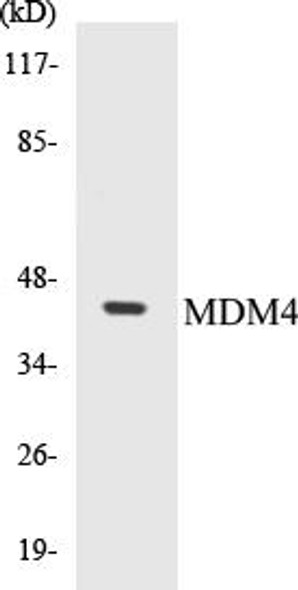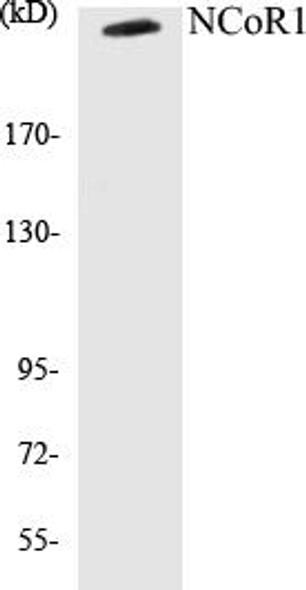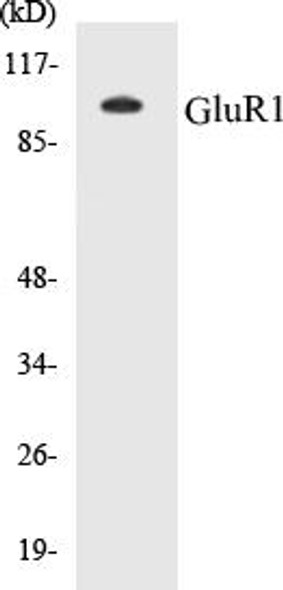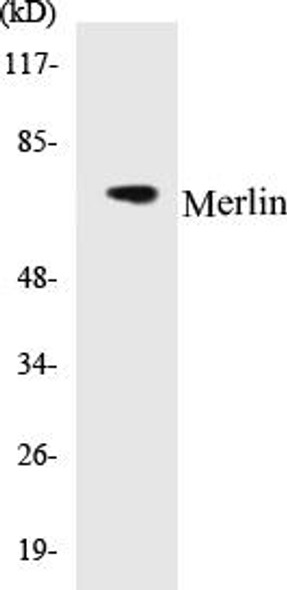EDD Colorimetric Cell-Based ELISA Kit
- SKU:
- CBCAB00630
- Product Type:
- ELISA Kit
- ELISA Type:
- Cell Based
- Research Area:
- Epigenetics and Nuclear Signaling
- Reactivity:
- Human
- Mouse
- Detection Method:
- Colorimetric
Description
EDD Colorimetric Cell-Based ELISA Kit
The EDD Colorimetric Cell-Based ELISA Kit is a cutting-edge tool for accurately measuring Endoplasmic Reticulum (ER) stress in cellular samples. This kit offers high sensitivity and specificity, allowing for reliable and reproducible results in various research applications.ER stress occurs when unfolded proteins accumulate in the ER, triggering a cellular response to restore protein homeostasis. This process is implicated in various diseases, including neurodegenerative disorders, cardiovascular diseases, and diabetes.
The EDD Colorimetric Cell-Based ELISA Kit enables researchers to study ER stress and investigate potential therapeutic interventions.By utilizing this advanced kit, researchers can gain valuable insights into the molecular mechanisms underlying ER stress and its impact on disease development. With its user-friendly protocol and accurate results, the EDD Colorimetric Cell-Based ELISA Kit is a valuable resource for advancing research in the field of cellular stress response.
| Product Name: | EDD Colorimetric Cell-Based ELISA |
| Product Code: | CBCAB00630 |
| ELISA Type: | Cell-Based |
| Target: | EDD |
| Reactivity: | Human, Mouse |
| Dynamic Range: | > 5000 Cells |
| Detection Method: | Colorimetric 450 nmStorage/Stability:4°C/6 Months |
| Format: | 96-Well Microplate |
The EDD Colorimetric Cell-Based ELISA Kit is a convenient, lysate-free, high throughput and sensitive assay kit that can detect EDD protein expression profile in cells. The kit can be used for measuring the relative amounts of EDD in cultured cells as well as screening for the effects that various treatments, inhibitors (ie siRNA or chemicals), or activators have on EDD.
Qualitative determination of EDD concentration is achieved by an indirect ELISA format. In essence, EDD is captured by EDD-specific primary antibodies while the HRP-conjugated secondary antibodies bind the Fc region of the primary antibody. Through this binding, the HRP enzyme conjugated to the secondary antibody can catalyze a colorimetric reaction upon substrate addition. Due to the qualitative nature of the Cell-Based ELISA, multiple normalization methods are needed:
| 1. | A monoclonal antibody specific for human GAPDH is included to serve as an internal positive control in normalizing the target absorbance values. |
| 2. | Following the colorimetric measurement of HRP activity via substrate addition, the Crystal Violet whole-cell staining method may be used to determine cell density. After staining, the results can be analysed by normalizing the absorbance values to cell amounts, by which the plating difference can be adjusted. |
| Database Information: | Gene ID: 51366, UniProt ID: O95071, OMIM: 608413, Unigene: Hs.492445 |
| Gene Symbol: | UBR5 |
| Sub Type: | None |
| UniProt Protein Function: | UBR5: E3 ubiquitin-protein ligase which is a component of the N-end rule pathway. Recognizes and binds to proteins bearing specific N-terminal residues that are destabilizing according to the N-end rule, leading to their ubiquitination and subsequent degradation. Involved in maturation and/or transcriptional regulation of mRNA by activating CDK9 by polyubiquitination. May play a role in control of cell cycle progression. May have tumor suppressor function. Regulates DNA topoisomerase II binding protein (TopBP1) in the DNA damage response. Plays an essential role in extraembryonic development. Ubiquitinates acetylated PCK1. Binds TOPBP1. Associates with CDK9 and TFIIS/TCEA1 and forms a transcription regulatory complex made of CDK9, RNAP II, UBR5 and TFIIS/TCEA1 that can stimulates target gene transcription (e.g. gamma fibrinogen/FGG) by recruiting their promoters. Associates with the E3 ligase complex containing DYRK2, EDD/UBR5, DDB1 and VPRBP proteins (EDVP complex). Interacts directly with DYRK2. Widely expressed. Most abundant in testis and expressed at high levels in brain, pituitary and kidney. |
| UniProt Protein Details: | Protein type:Nuclear receptor co-regulator; EC 6.3.2.19; Ligase; EC 6.3.2.-; Ubiquitin ligase; Ubiquitin conjugating system Chromosomal Location of Human Ortholog: 8q22 Cellular Component: nucleoplasm; membrane; cytoplasm; nucleus Molecular Function:protein binding; ubiquitin binding; zinc ion binding; RNA binding; ubiquitin-protein ligase activity; ligase activity Biological Process: ubiquitin-dependent protein catabolic process; cell proliferation; protein polyubiquitination; progesterone receptor signaling pathway; positive regulation of protein import into nucleus, translocation; protein ubiquitination during ubiquitin-dependent protein catabolic process; DNA repair; response to DNA damage stimulus |
| NCBI Summary: | This gene encodes a progestin-induced protein, which belongs to the HECT (homology to E6-AP carboxyl terminus) family. The HECT family proteins function as E3 ubiquitin-protein ligases, targeting specific proteins for ubiquitin-mediated proteolysis. This gene is localized to chromosome 8q22 which is disrupted in a variety of cancers. This gene potentially has a role in regulation of cell proliferation or differentiation. [provided by RefSeq, Jul 2008] |
| UniProt Code: | O95071 |
| NCBI GenInfo Identifier: | 9545980 |
| NCBI Gene ID: | 51366 |
| NCBI Accession: | AAF88143.1 |
| UniProt Secondary Accession: | O95071,O94970, Q9NPL3, B2RP24, J3KMW7, |
| UniProt Related Accession: | O95071 |
| Molecular Weight: | 309,224 Da |
| NCBI Full Name: | hyd protein |
| NCBI Synonym Full Names: | ubiquitin protein ligase E3 component n-recognin 5 |
| NCBI Official Symbol: | UBR5 |
| NCBI Official Synonym Symbols: | DD5; EDD; HYD; EDD1 |
| NCBI Protein Information: | E3 ubiquitin-protein ligase UBR5; E3 identified by differential display; E3 ubiquitin protein ligase, HECT domain containing, 1; E3 ubiquitin-protein ligase, HECT domain-containing 1; hyperplastic discs protein homolog; progestin induced protein; progestin-induced protein |
| UniProt Protein Name: | E3 ubiquitin-protein ligase UBR5 |
| UniProt Synonym Protein Names: | E3 ubiquitin-protein ligase, HECT domain-containing 1; Hyperplastic discs protein homolog; hHYD; Progestin-induced protein |
| Protein Family: | Hydrolase |
| UniProt Gene Name: | UBR5 |
| UniProt Entry Name: | UBR5_HUMAN |
| Component | Quantity |
| 96-Well Cell Culture Clear-Bottom Microplate | 2 plates |
| 10X TBS | 24 mL |
| Quenching Buffer | 24 mL |
| Blocking Buffer | 50 mL |
| 15X Wash Buffer | 50 mL |
| Primary Antibody Diluent | 12 mL |
| 100x Anti-Phospho Target Antibody | 60 µL |
| 100x Anti-Target Antibody | 60 µL |
| Anti-GAPDH Antibody | 60 µL |
| HRP-Conjugated Anti-Rabbit IgG Antibody | 12 mL |
| HRP-Conjugated Anti-Mouse IgG Antibody | 12 mL |
| SDS Solution | 12 mL |
| Stop Solution | 24 mL |
| Ready-to-Use Substrate | 12 mL |
| Crystal Violet Solution | 12 mL |
| Adhesive Plate Seals | 2 seals |
The following materials and/or equipment are NOT provided in this kit but are necessary to successfully conduct the experiment:
- Microplate reader able to measure absorbance at 450 nm and/or 595 nm for Crystal Violet Cell Staining (Optional)
- Micropipettes with capability of measuring volumes ranging from 1 µL to 1 ml
- 37% formaldehyde (Sigma Cat# F-8775) or formaldehyde from other sources
- Squirt bottle, manifold dispenser, multichannel pipette reservoir or automated microplate washer
- Graph paper or computer software capable of generating or displaying logarithmic functions
- Absorbent papers or vacuum aspirator
- Test tubes or microfuge tubes capable of storing ≥1 ml
- Poly-L-Lysine (Sigma Cat# P4832 for suspension cells)
- Orbital shaker (optional)
- Deionized or sterile water
*Note: Protocols are specific to each batch/lot. For the correct instructions please follow the protocol included in your kit.
| Step | Procedure |
| 1. | Seed 200 µL of 20,000 adherent cells in culture medium in each well of a 96-well plate. The plates included in the kit are sterile and treated for cell culture. For suspension cells and loosely attached cells, coat the plates with 100 µL of 10 µg/ml Poly-L-Lysine (not included) to each well of a 96-well plate for 30 minutes at 37°C prior to adding cells. |
| 2. | Incubate the cells for overnight at 37°C, 5% CO2. |
| 3. | Treat the cells as desired. |
| 4. | Remove the cell culture medium and rinse with 200 µL of 1x TBS, twice. |
| 5. | Fix the cells by incubating with 100 µL of Fixing Solution for 20 minutes at room temperature. The 4% formaldehyde is used for adherent cells and 8% formaldehyde is used for suspension cells and loosely attached cells. |
| 6. | Remove the Fixing Solution and wash the plate 3 times with 200 µL 1x Wash Buffer for five minutes each time with gentle shaking on the orbital shaker. The plate can be stored at 4°C for a week. |
| 7. | Add 100 µL of Quenching Buffer and incubate for 20 minutes at room temperature. |
| 8. | Wash the plate 3 times with 1x Wash Buffer for 5 minutes each time. |
| 9. | Add 200 µL of Blocking Buffer and incubate for 1 hour at room temperature. |
| 10. | Wash 3 times with 200 µL of 1x Wash Buffer for 5 minutes each time. |
| 11. | Add 50 µL of 1x primary antibodies (Anti-EDD Antibody and/or Anti-GAPDH Antibody) to the corresponding wells, cover with Parafilm and incubate for 16 hours (overnight) at 4°C. If the target expression is known to be high, incubate for 2 hours at room temperature. |
| 12. | Wash 3 times with 200 µL of 1x Wash Buffer for 5 minutes each time. |
| 13. | Add 50 µL of 1x secondary antibodies (HRP-Conjugated AntiRabbit IgG Antibody or HRP-Conjugated Anti-Mouse IgG Antibody) to corresponding wells and incubate for 1.5 hours at room temperature. |
| 14. | Wash 3 times with 200 µL of 1x Wash Buffer for 5 minutes each time. |
| 15. | Add 50 µL of Ready-to-Use Substrate to each well and incubate for 30 minutes at room temperature in the dark. |
| 16. | Add 50 µL of Stop Solution to each well and read OD at 450 nm immediately using the microplate reader. |
(Additional Crystal Violet staining may be performed if desired – details of this may be found in the kit technical manual.)










